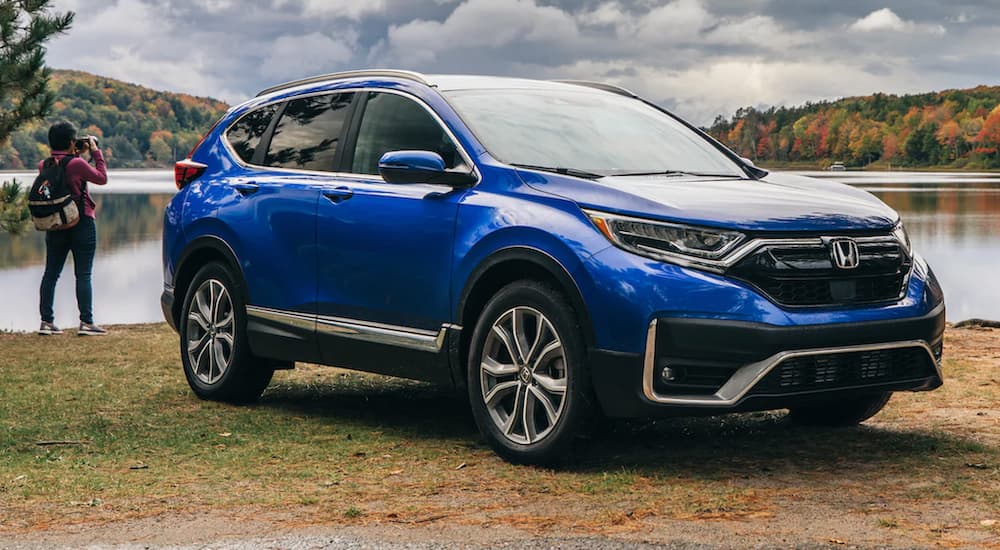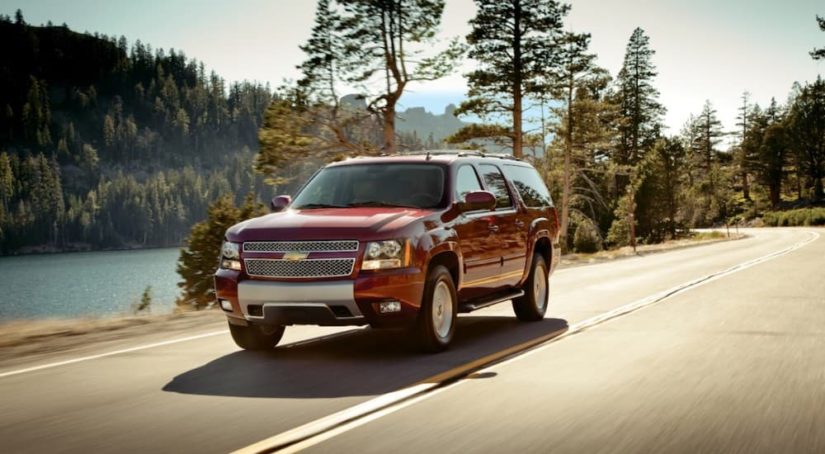There are lots of reasons why folks dread shopping for used cars, but one of the most prominent areas of consternation is the compromise. You can buy a car with low mileage, or you can get an inexpensive used car. You can find the model you want but not the trim you’d prefer. Of all the used cars for sale, the likelihood that one checks off all of your major wants and needs often seems pretty dismal.
However, being willing to compromise doesn’t mean you have to settle for the first rust bucket that’s in your budget. In fact, it’s easier than ever to find exactly what you want at a price that makes sense for you. Sure, you’re going to have to conjure up some patience and perseverance, but there’s a nice reward at the end of this path. Plus, it wasn’t too long ago that drivers were scanning newspapers, magazines, and grocery store bulletin boards to find their next used car, so take a deep breath and appreciate the magic of the internet. It is possible to find a used car that’s “just right” in every possible way. Here’s how you can take your inner Goldilocks shopping for a new car and drive away completely satisfied.
Start With Your Budget
There are a lot of ways you could potentially start your used car shopping experience, but one area in which you should never compromise is your budget. When you’re sitting in the dealership with a pen in one hand, staring directly at the vehicle of your dreams, it’s easy to convince yourself that $10,000 isn’t that much more money. But when you’re behind on your car payment, and your monthly insurance payment is more than your electric bill, that $10,000 suddenly feels like a very big number, after all.
If you start your shopping experience by creating a strict budget, you will be less likely to overextend yourself in a moment of adrenaline-soaked poor decision-making. That’s not to say you have to whittle down your finances to the last cent, but instead, take a serious, realistic look at your monthly budget to determine a reasonable price range for your next car.
Don’t forget to take insurance, fuel, and regular maintenance into consideration, as well. Many insurance companies allow drivers to get a free estimate for adding or replacing an existing vehicle to their policy to get a feel for how their rates might change. If you have a particular type of vehicle in mind, you can compare the fuel economy of popular vehicles in that class through the EPA’s fuel economy site. For example, if you’re in the market for a pickup truck, you can compare popular trucks like the Ford F-150, Chevy Silverado 1500, or Ram 1500 to determine which is going to find your weekly fuel budget agreeable.

Be Honest With Your Needs
This is one of the hardest topics to discuss with your inner Goldilocks because what most of us want and what we actually need are often two very different things. Do you have children in car seats? Are you comfortable with lifting your children in and out of a tall vehicle, like a heavy-duty pickup truck, or would it be ergonomically beneficial for you to choose a compact crossover like Honda CR-V or the Kia Soul? How about cargo? Do you haul enough to justify a large SUV or pickup truck, or could you see yourself having a lot of fun in a Ford Maverick or Hyundai Santa Cruz?
Where do you primarily drive and park your car? If you’re in a highly urban area where parallel parking is standard, you might think twice about a Chevy Suburban. Likewise, if your daily commute includes long, winding country roads that rarely see a snowplow, it’s not a bad idea to consider a used car that has four-wheel or all-wheel drive rather than a sports car.
Try to define your dream vehicle as broadly as possible. Even if you think you know what will fit the ticket, allow yourself to be surprised by what’s out there. Today’s automotive market allows for nearly infinite customization. You can find used sedans with all-wheel drive, compact SUVs with a tow package already installed, and even used Jeeps that haven’t been lifted and tricked out, as long as you’re willing to explore your options.
Chances are good that you have a very clear picture of your dream car. However, when you start thinking about how you really use your vehicle, you might find that the dream and the reality aren’t aligning. Normally, this leads to compromise, but this is where a little creativity and innovation come in handy––and also the internet.
Finding Your Perfect Fit
Now you have a target, though likely it’s more of a nebulous concept, such as a “three-row, eight-passenger SUV under $25,000,” rather than “2021 Chevy Suburban Z71, White, upgraded audio and Max Trailering Package.” Try running these general searches through the internet. You might find hits from local dealership websites. This is a great place to start since you’ll be able to learn more about the vehicle and test drive it without a hassle. You may also search larger sales sites that help you search for cars in your area that meet your criteria.
The goal is to search high and low, but you’ll want to stay organized. Bookmark or keep a spreadsheet or list of links to vehicles that you like and that you could see yourself driving. Make notes when you test drive them, too. By not being entirely specific in your dreams, you are opening yourself to opportunity. Imagine finding a bright yellow 2020 Acura NSX within your budget, but the inside smells like a fish cannery. Do you drive with your windows down forever, or do you take another look at that bright yellow 2019 Honda Civic Si that’s less expensive and has better maintenance records (and no noticeable stench)? There’s no need to disappoint yourself with compromise when your established boundaries allow for plenty of exploration.
As you explore, be very careful to set your search parameters to include your budget. “See not, want not,” as the saying ought to go. Using this approach will often open your eyes to a lot of really cool options in your price range that you may not otherwise consider based on other more exacting search criteria.

A Learning Experience
For many drivers, this type of vague, general approach to used car shopping may be terrifying. As humans, we enjoy sticking with what we know. Our train of thought tends to wander towards doom and gloom: “Mazda CX-5? Never heard of it. Must be awful.” In fact, the Mazda CX-5 is a very well-received compact SUV, and you may have never heard of it because you were searching for a very specific different vehicle.
Rather than stick with what’s familiar, take the opportunity to research the options in your budget that meet your exact criteria. Be sure to compare the price of each vehicle with fair market value, even if it is within your budget, too, especially if you’re purchasing from a private seller. Take the time to compare trims, too. In some cases, you may find that a higher trim only costs more because of the paint color and wheels, when in fact, the trim just below that was frequently customized with the feature you actually wanted.
Is shopping for used cars still a bit of a roulette? Absolutely. However, if you widen your gaze and internet search, and keep very good records while you do so, you may find yourself driving away in a low mileage, budget-friendly, fuel-sipping vehicle that has every bell and whistle you wanted, and then some!



